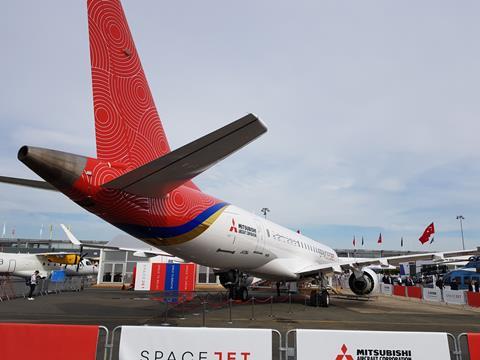The head of commercial aerospace at Mitsubishi Heavy Industries feels that the timing is premature to decide on whether to pursue a new indigenous airliner programme.
During a 27 June shareholder meeting, Hiroyuki Koguchi, senior vice-president at MHI, stressed that it is not yet the right point to commit to a new programme.

Koguchi adds that learnings from the failed SpaceJet airliner programme will be used by the company in other areas.
He acknowledges, however, that the Japanese government has laid out a basic framework for such an initiative.
In late March, the Japan Aircraft Development Corporation released its “Aircraft Industry Strategy,” underlining the critical importance of aerospace to Japan’s economy and strategic position, observing that several of the country’s leading companies have significant involvement in the sector.
The document laid out the country’s current industrial situation and called for a new airliner sometime in the 2030s, with Japan leading a coalition in a shared high technology effort.
Tokyo is prepared to invest around Y5 trillion ($31 billion) in the effort.
The once-promising SpaceJet programme was a cathartic experience for Mitsubishi, which struggled with programme delays and certification challenges.
Rolled out in 2014 and making its first flight in 2015, at its peak the SpaceJet – referred to as the Mitsubishi Regional Jet, or MRJ, before a 2019 rebranding – had over 400 commitments from airlines, including key regional carriers in the USA.
Problems included a lack of understanding about the certification of a modern airliner, design changes, issues with suppliers, and the flawed assumption that US pilot scope-clause rules would be relaxed — a precondition for the 90-seat M90 to enter service with US regional operators.
MHI shut down the programme in February 2023, at which point it had been effectively frozen for two years.


























